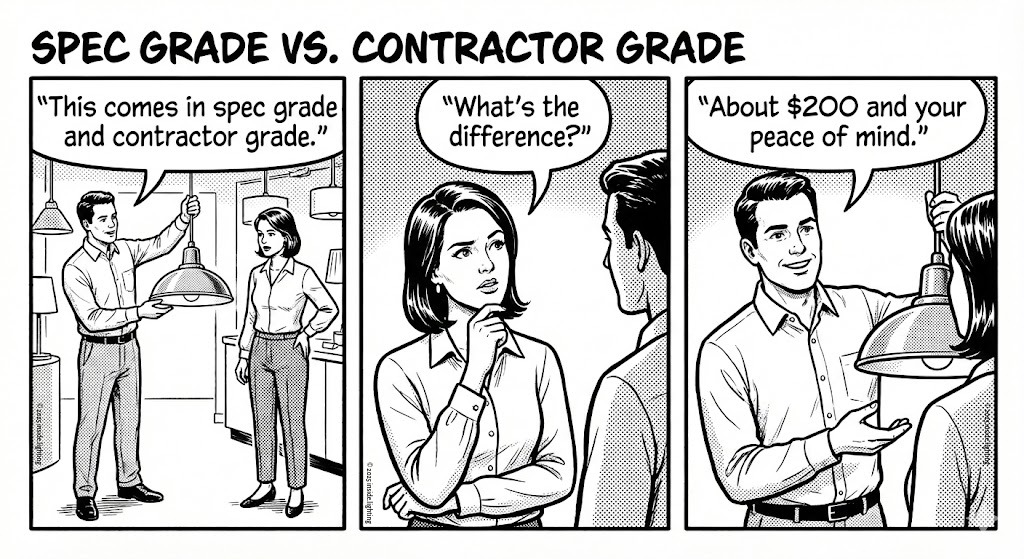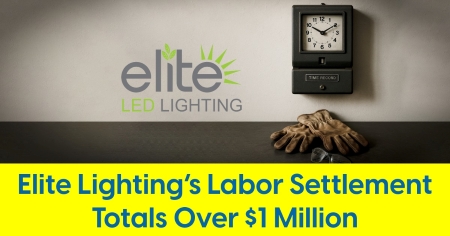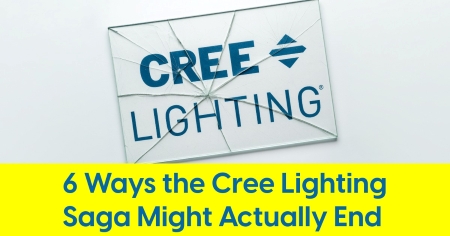January 6, 2025
Lighting Controls Are Crucial for Responsible Outdoor Lighting

by Craig DiLouie, LC, CLCP of the Lighting Controls Association
Dimming and scheduling reduce energy and minimize light pollution impacts
Saving energy while reducing skyglow, light trespass, and glare, lighting controls have emerged as a critical component of responsible outdoor lighting.
In this article, we’ll make the case.
- “Light pollution” is an informal term covering potential negative byproducts of outdoor lighting.
- Skyglow is light emitted or reflected to the sky, where it can obscure a view of the stars.
- Light trespass is light emitted onto neighboring properties that is objectionable.
- And glare is high brightness that can impair or disable vision.
- In addition to light pollution, spectral emission has become a significant issue over the past decade.
Governments take light pollution seriously and have enacted numerous ordinances across the United States.
Unfortunately, many were written by people with little lighting knowledge, resulting in a patchwork of laws that can be confusing. Analyzing more than 650 ordinances, the DesignLights Consortium (DLC) discovered many inconsistencies as well as references to outdated methods and terminology.
To streamline and improve ordinances, the Illuminating Engineering Society (IES) and International Dark-Sky Association (IDA) developed a model lighting ordinance (MLO) based in part on the BUG (backlight, uplight, glare) method for rating outdoor luminaires provided in IES/ANSI TM-15-20, Technical Memorandum: Luminaire Classification System for Outdoor Luminaires.
The LEED rating system for buildings incorporates requirements from the IES MLO. The WELL rating system adds a requirement for 2700K to 3000K light sources.
Outdoor lighting systems should be designed following the “Five Principles of Responsible Outdoor Lighting.”
This joint IES-IDA document states that outdoor lighting should be:
- Useful: light should be produced because it is needed.
- Targeted: light should be directed where it is needed.
- Appropriate: light should only be as bright as needed.
- Controlled: light should only be produced when and in the amount needed.
- Warm: light should express warmer shades of white where possible.
Building on this concept, the DLC published seven strategies for responsible outdoor lighting systems:
- Consult with community and local experts.
- Use the right amount of light that is needed.
- Use dimmable and control-ready lighting.
- Control the lighting to save energy and minimize light pollution.
- Control the lighting to respond to seasonable environmental changes.
- Control the light distribution using appropriate optics.
- Minimize blue-violet emission.
The DLC recognizes products as suitable for responsible outdoor lighting in its Solid-State Lighting Qualified Products List.
Representing some 100 utilities and energy efficiency organizations that administer commercial lighting rebate programs, the DLC maintains Qualified Products Lists (QPL), which many utility energy-efficiency programs use to qualify products for rebates and incentives. The largest QPL covers solid-state lighting products, of which about half are outdoor lighting products.
In December 2021, the DLC released LUNA 1.0, a series of technical requirements for outdoor products that save energy while minimizing light pollution. Products that satisfy these requirements are listed in both the solid-state lighting QPL and LUNA, a subset of this QPL. To date, more than 350 products are LUNA-qualified. The General Services Administration’s latest federal facilities standard includes a requirement for designers to specify LUNA-listed products for area, wall-mounted, and bollard lighting.
In 2022, the DLC released a sample outdoor lighting ordinance for adoption by municipalities. It contains a set of design requirements that can be satisfied by simply installing LUNA-qualified products.
The LED light source is highly compatible with responsible outdoor lighting.
Its compact size enables precise optical control in luminaires. The efficacy divide between warm and cool light sources has diminished; lower-CCT LED products are nearly as energy-efficient as their higher-CCT counterparts. And LEDs are readily controllable via switching and dimming.
Lighting control is a pillar of responsible outdoor lighting.
By reducing or eliminating lighting when not needed, lighting controls can play a critical role in minimizing unintended effects of nighttime lighting. Specifically, using lighting controls directly fulfills one of the IES-IDA Principles of Responsible Outdoor Lighting and three DLC strategies.
“Lighting control is arguably the most important way to reduce light pollution,” said Leora Radetsky, LUNA Program Director/Senior Lighting Scientist, the DLC. “Three strategies in our seven that reduce light pollution involve controls.”
She added: “For example, high-end trim can be used to reduce overlighting and ‘right size’ light output, and scheduled dimming and/or occupancy sensors with programmable dimming can be used to meet energy code requirements. This enables adaptive lighting where lighting is turned Off or dimmed when spaces are unoccupied. Dimming also directly reduces light pollution and energy consumption by a proportional amount—i.e., dimming a product by 50 percent reduces both energy use and light pollution by 50 percent.”
Commercial building energy codes generally require that exterior lighting be turned Off when sufficient daylight is present or based on a schedule, with some exceptions. Building façade and landscape lighting must automatically turn Off during the night when it is no longer needed, within set times based on business hours. All other exterior lighting—typically operating dusk to dawn—must be dimmed at night based on time or occupancy.
The DLC’s LUNA technical requirements for controllability include continuous dimming capability, wired communication for a single control point, integral controls, and communication between multiple control points.
Dimming capability: The product must have continuous dimming capability to 20 percent or less of maximum output power.
Wired communication for a single control point: For the luminaire to dim, a sensor or control module communicates the dim level to the driver via a protocol, which may be analog (0-10V) or digital (e.g., DALI). This must be reported by the manufacturer on the product specification sheet.
Integral controls: The product specification sheet must identify available integral controls, capabilities, and control receptacles, including ordering option codes. Integral controls include sensors and controllers connecting via NEMA 5-pin, NEMA 7-pin, Zhaga Book 18, or another accepted method. Capabilities include automatic On/Off, photocontrol with self-calibrating astronomical timeclock, part-night dimming, and low-end trim for vacancy mode.
Communication between multiple control points: The product specification sheet must identify what protocol enables multiple control points to communicate. These include wired and wireless protocols.
“LUNA-qualified products must be continuously dimmable to at least 20 percent of full light output, and we report their internal control capabilities and wired or wireless communication protocols,” said Radetsky. “LUNA’s continuous dimming requirements support the ability to gradually raise and lower light levels in a way that makes changes less noticeable to occupants.”
She pointed out that many LED outdoor luminaires feature 0-10V dimming wires for connecting to an external controller. Pole-mounted LED luminaires (and some wall-mounted luminaires) are available with dimming capability, a PIR occupancy sensor that provides a high/low output based on occupancy, and scheduling, which may be implemented via a networked lighting control system. Additionally, wireless communication is becoming increasingly available.
Radetsky described what an ideal LUNA adoption scenario might look like. “All exterior lighting products should minimize wasted light at night,” she said. “They should emit minimal or no light above 90 degrees, minimize tilting beyond that needed to level the luminaire with the pavement, and have a CCT of 3000K or lower. They should be control ready—have a 7-pin receptacle and preferably a digital driver like a D4i driver—to enable granular, programmable, and occupancy-driven gradual dimming that saves energy and reduces light pollution.”
She added, “For small projects, exterior networked lighting controls may not be as cost-effective because they can make up a higher percentage of the total capital budget. However, available rebates can help reduce the system cost. For large projects, exterior NLCs can be quite cost-effective considering the energy savings they enable with scheduled dimming/switching, occupancy sensing, and high-end trim. NLCs also enable asset management capabilities such as reducing maintenance costs by pinpointing where an outage has occurred.”
A DLC study confirmed the importance of lighting control.
Responsible outdoor lighting can reduce light pollution without a significant energy savings tradeoff. The DLC tested this hypothesis by conducting a photometric study in which two common applications—perimeter, walkway, and parking lot lighting at a high school and streetlighting on a town’s main street—were modeled and analyzed using lighting and photometrically accurate design software.
In each application, the base condition (traditional HID) was compared to two upgrade scenarios, the first being 4000K LED luminaires and the second 3000K LUNA-listed LED luminaires.
The LUNA products reduced light pollution in the streetlighting application, though energy consumption varied based on luminaire type and product. In the high school application, however, designing to lower light levels by eliminating overlighting and dimming the lights after hours saved energy compared to the non-LUNA LED option while also having an even bigger impact on light pollution reduction than the luminaire optics. These results were based on a basic layer of lighting control and did not include additional energy savings and light pollution reductions from implementing high-end trim with a networked lighting control system.
“The study concluded that implementing dimming at night when the spaces were unoccupied post-curfew reduced energy consumption and light pollution by a commensurate amount,” Radetsky said. “In particular, even sites with 4000K LED luminaires installed with zero uplight and no overlighting could reduce their skyglow impact post-curfew by deeply dimming during that period.”
Following the study, the DLC published a free online economic calculator that includes available rebates and control strategies and provides multiple application comparisons.
Lighting control is a best practice for outdoor lighting.
Commercial building energy codes require that outdoor lighting be turned Off or reduced when not needed, saving energy while commensurately reducing light pollution. Specifying LUNA luminaires ensures that all lighting is controllable and controls-ready, requiring only control implementation to realize benefits.
The Lighting Controls Association is a council of the National Electrical Manufacturers Association that provides education about lighting control technology and application, including articles, videos, design awards, news, resources, and Education Express, a free, 24/7 series of online courses covering everything from technology to design to commissioning.










